You’ve spent hours building backlinks, reaching out to webmasters, writing guest posts, or earning mentions from reputable sites. But after all that effort, your rankings barely move. Why?
Because Google might not even know those backlinks exist.
That’s one of the most overlooked problems in SEO: unindexed backlinks. If search engines haven’t discovered or indexed your backlinks, they pass no authority, no “link juice,” and no ranking value. In other words, they’re invisible.
This is where backlink indexing becomes critical. It’s the process that ensures your backlinks are recognized and counted by Google, allowing them to strengthen your domain authority and boost your search visibility.
In this guide, we explain what backlink indexing is, why some links get indexed faster, and how to ensure every backlink boosts your SEO.
Quick Summary: Backlink Indexing & SEO Performance (2025)
This is the TL;DR. Skim this for the short version, then dive deeper if you need.
- Backlink indexing ensures your backlinks are discovered and counted by Google so they pass authority.
- Unindexed backlinks offer zero SEO value. This guide explains what indexing is, how long it takes, factors affecting speed, and the best strategies (GSC, APIs, RSS, social) to get every link recognized in 2025.
What is backlink indexing?
Backlink indexing is the process through which search engines, such as Google, discover and record new backlinks pointing to your website in their search index.
In simple terms, it ensures that your backlinks are recognized and counted when search engines evaluate your site.
A backlink acts as a vote of confidence from one website to another. However, a backlink only becomes valuable when it is indexed by search engines. Without indexing, the backlink exists but has no impact on your SEO performance.
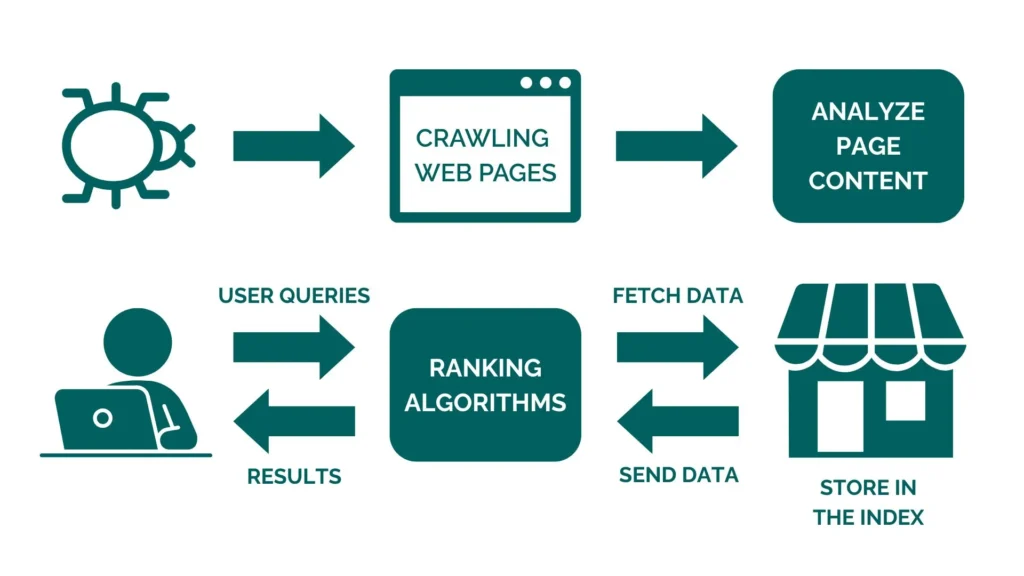
When a backlink is indexed, it:
- Becomes part of search engine ranking calculations.
- Passes authority or “link juice” to your website.
- Improves your site’s visibility in search results.
- Boosts your domain credibility.
- Positively impacts rankings for relevant keywords.
If a backlink is not indexed, search engines essentially ignore it, meaning it does not contribute to your website’s SEO.
According to studies, 29% of brands perform competitors’ link profile analysis to identify backlink opportunities and strengthen their own link-building strategies.
This makes backlink indexing a critical step in any link-building techniques. Unindexed backlinks cannot help your site gain authority or improve search rankings until they are recognized by search engines.
In short, backlink indexing transforms a regular backlink into an active linkable asset that strengthens your website’s online presence.
Want to ensure your backlinks actually boost your SEO? Learn more about our professional link-building services and start building high-quality backlinks
In short, Backlink indexing ensures your links pass ranking authority; without it, your link-building efforts remain invisible to search engines.
Backlink indexing quick checklist (copyable checklist)
Grab the instant checklist to improve your backlinks and get better SEO results.
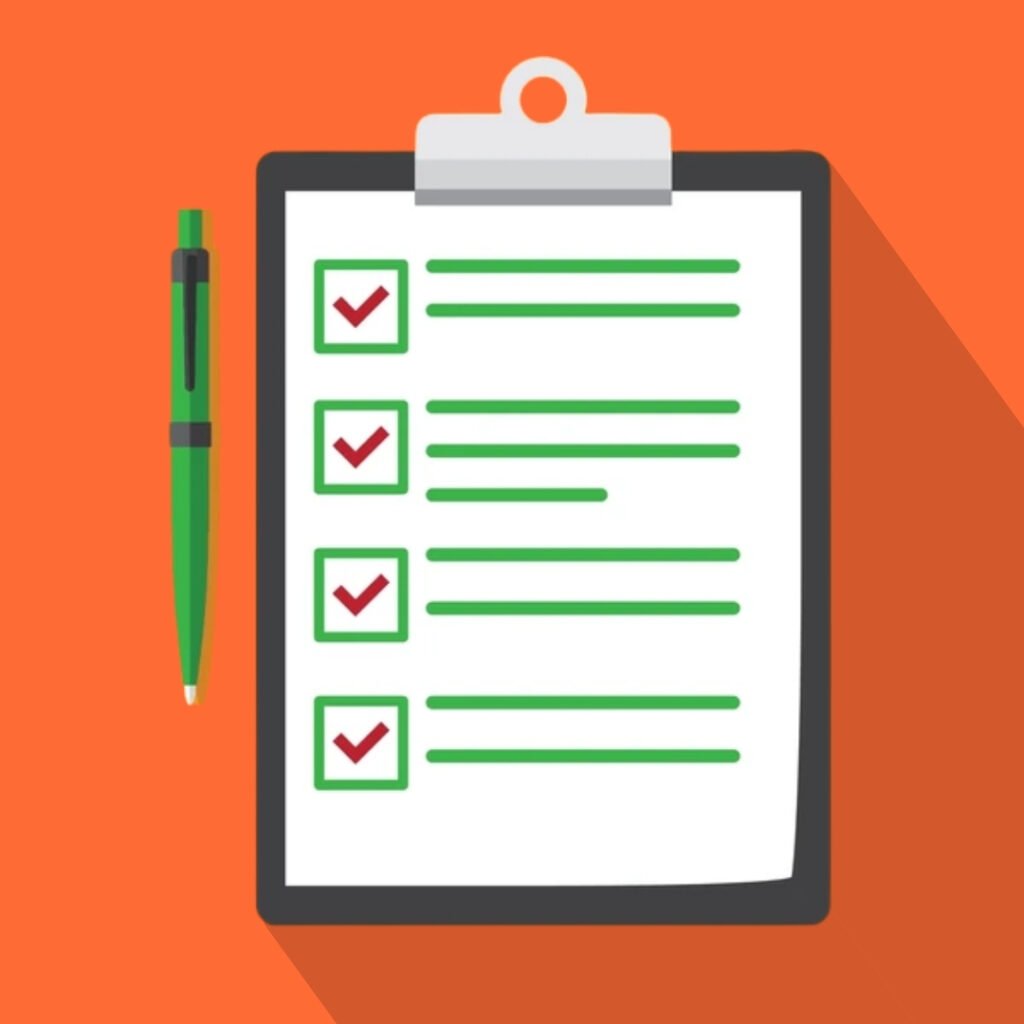
How long does it take Google to index backlinks?
The truth is, there’s no fixed timeline for backlink indexing. Some backlinks may get recognized by Google in just a few days, while others might take weeks or even months.
So why does this happen? Understanding the factors that affect indexing can help you find ways to speed up the process.
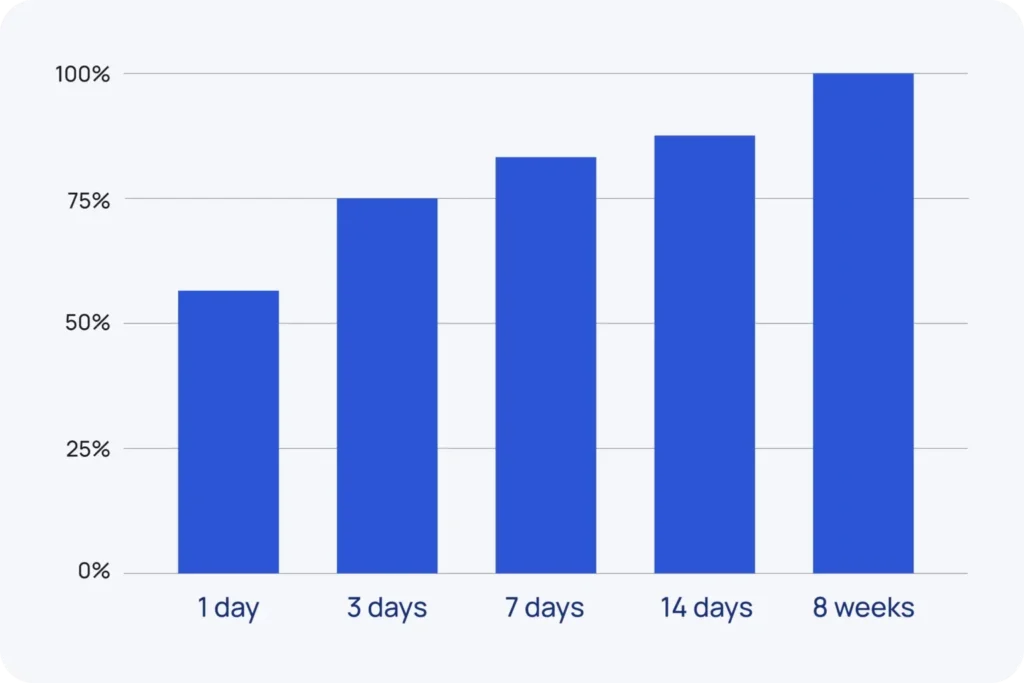
1. Authority and relevance of the source website
Backlinks from highly authoritative and credible websites, especially those relevant to your niche, are more likely to be crawled and indexed quickly.
Google prioritizes links from trusted sources, so a link from a well-known site usually appears in the index faster than one from a low-quality site.
2. Crawl frequency
Google doesn’t crawl all websites equally. Sites that are updated regularly or already considered authoritative tend to be crawled more often.
If your backlink is on a site that Google visits frequently, it’s more likely to be indexed quickly.
3. Site health
Websites that are well-structured, SEO-optimized, and easy for bots to navigate help backlinks get indexed faster. Broken links, poor site structure, or slow-loading pages can delay the process.
4. Authority of the referring domain
Older and more established domains generally get crawled more often than brand-new domains. Backlinks from such domains typically reach the index faster.
5. Link sources and diversity
Having backlinks from a variety of trustworthy sources can improve indexing speed.
However, backlinks from low-quality or spammy sites may be ignored or take much longer to be indexed, as Google may treat them cautiously.
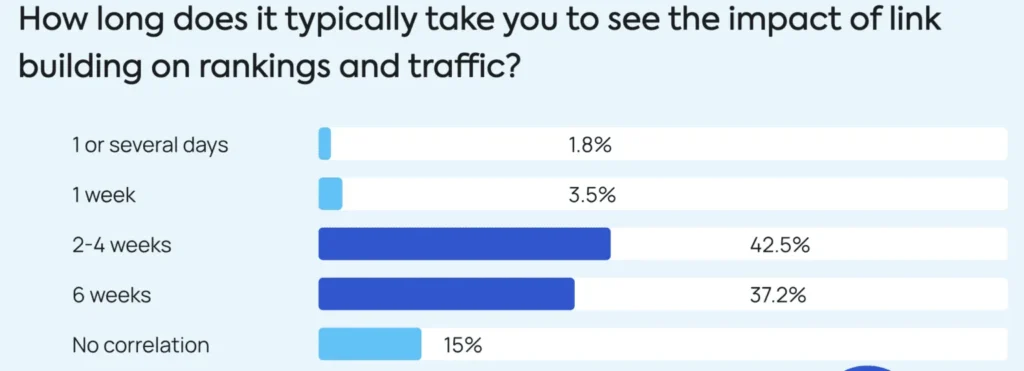
Did you know? According to a study, most SEO professionals agree that link building is among Google’s top two ranking factors for determining a webpage’s position in search results. This has also been confirmed by Google’s Search Quality Senior Strategist.
By focusing on authoritative sources, healthy websites, and diverse link-building and SEO strategies, you can increase the chances of faster backlink indexing and stronger SEO performance.
How to index backlinks faster
| Step | Check | Tool |
| Verify backlink page live | ✅ | Browser / Ahrefs |
| Submit via GSC | ✅ | Search Console |
| Share socially | ✅ | Twitter, LinkedIn |
| Add to RSS feed | ✅ | Feedly / generator |
Getting your backlinks indexed quickly is crucial for maximizing their SEO impact.
The faster search engines recognize your backlinks, the sooner they start passing authority and improving your rankings.
Here’s a detailed look at the most effective methods to speed up backlink indexing.

1. Focus on high-quality backlinks
Backlinks from authoritative, relevant sites are indexed faster because search engines trust these sources. To build high-quality backlinks:
- Target websites that have organic traffic and are well-regarded in your niche.
- Craft personalized outreach emails to bloggers, industry influencers, and reputable sites
- Ensure the content surrounding your backlink is relevant and adds value. Contextual backlinks are highly favored.
- Make sure the page your backlink points to has strong, informative content. It naturally attracts more links, including do-follow links, which help pass authority and improve indexing speed.
High-quality backlinks from trusted, niche-specific sites signal reliability to search engines and provide a long-term SEO advantage.
2. Submit backlinks manually
If your backlinks haven’t been indexed yet, you can prompt search engines directly:
- Ask the website owner to submit the page to Google Search Console: Only the verified owner can request indexing for a URL. Maintaining good relationships with webmasters makes this easier.
- Use Google Search Console:
- Go to the URL Inspection Tool in your account.
- Paste the URL containing your backlink and click “Enter.”
- Hit the “Request Indexing” button.
As mentioned in the Google official indexing documentation, submitting URLs helps Google discover new or updated pages faster, especially when they are part of your link-building campaigns.
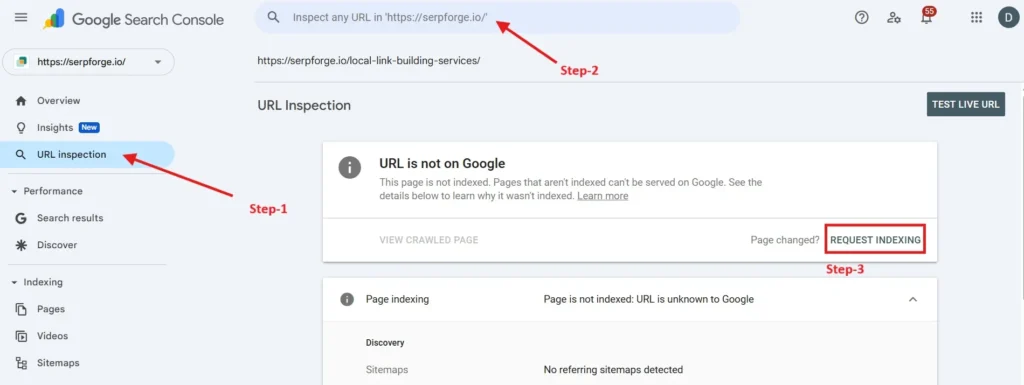
According to research, High-quality backlinks do more than just boost your search rankings; they attract targeted traffic, generate leads, and strengthen your overall marketing momentum.
In fact, only 1 out of every 20 pages without backlinks receives any organic traffic at all.
This signals Google to crawl the page sooner, increasing the likelihood your backlink will be indexed faster.
3. Use indexing APIs
Although Google doesn’t support the Open Index Now protocol like Bing or Yandex, it does provide the Google Indexing API, mainly for certain content types like JobPosting or BroadcastEvent.
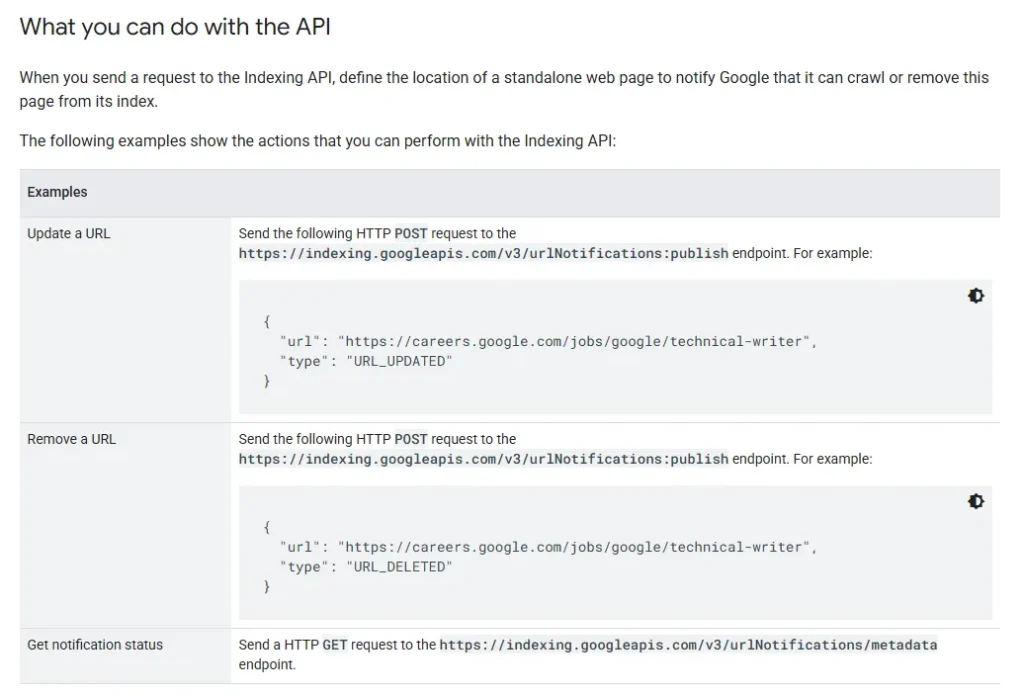
Interesting Insight:
According to the Index Checker General page, indexing through the API can significantly reduce the average indexing time, while typical pages take around 27.4 days to get indexed naturally.
API notifications can get pages indexed within hours or a few days, depending on page quality and domain authority.
You can still leverage tools like Rank Math SEO to integrate API settings and automate indexing for compatible pages:
- Create a project in the Google API Console.
- Enable the Indexing API and generate credentials (JSON Key).
- Add the JSON Key in Rank Math under the Instant Indexing settings.
This method can help schedule faster crawling for your content and backlinks, especially when used alongside other indexing strategies.
Backlink indexing quick checklist (copyable checklist)
Grab the instant checklist to improve your backlinks and get better SEO results.

4. Using social media
Sharing your backlinks on social media increases visibility and encourages search engines to crawl your pages faster:
- Post backlinks on platforms like Twitter, LinkedIn, Pinterest, and Facebook.
- Twitter is particularly effective since Google indexes tweets in real-time and even displays Twitter content in search results.
- Social engagement, likes, shares, and comments can further boost indexing probability.

Social sharing amplifies reach, helps attract more natural backlinks, and signals relevance to search engines.
5. Use RSS feeds
RSS feeds are a simple but effective way to help search engines discover your backlinks:
- Create an RSS feed for your website content using any feed generator.
- Submit the feed to RSS directories and aggregators.
- Well-crawled feeds increase the chance that pages containing your backlinks will be indexed faster.
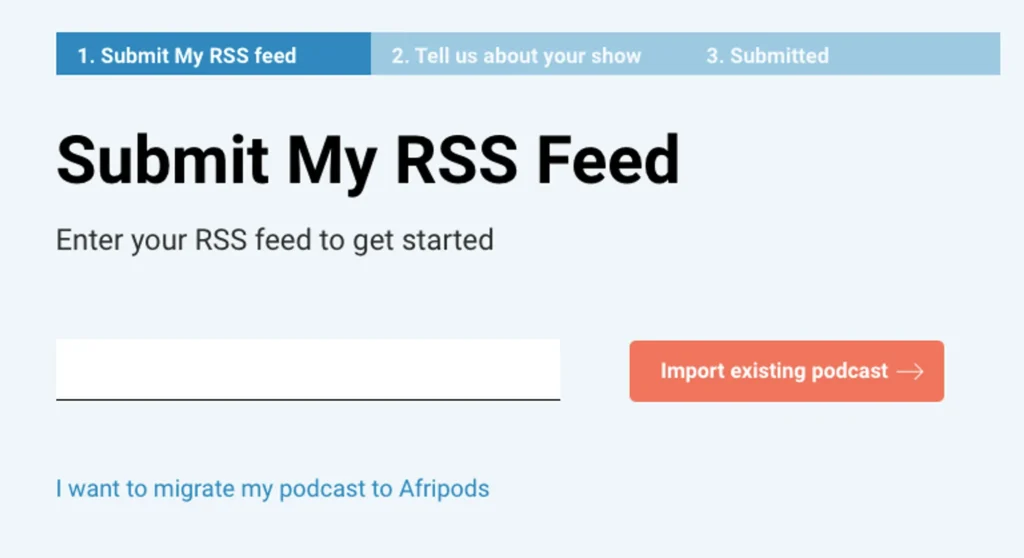
6. Monitor and troubleshoot backlinks
Keeping an eye on your backlinks ensures that indexing issues are identified and fixed promptly. Using a backlink monitoring tool like Ahrefs helps you track your backlinks, monitor their status, and identify links that aren’t indexed.
- Check indexing status: Search the exact URL of the page containing your backlink on Google. If it appears, it’s indexed.
- Use tools like Ahrefs: Track your backlinks, monitor their status, and identify links that are not indexed.
- Investigate issues: Common obstacles include low-quality content, broken links, improper redirects, robots.txt restrictions, or incorrect canonical tags.
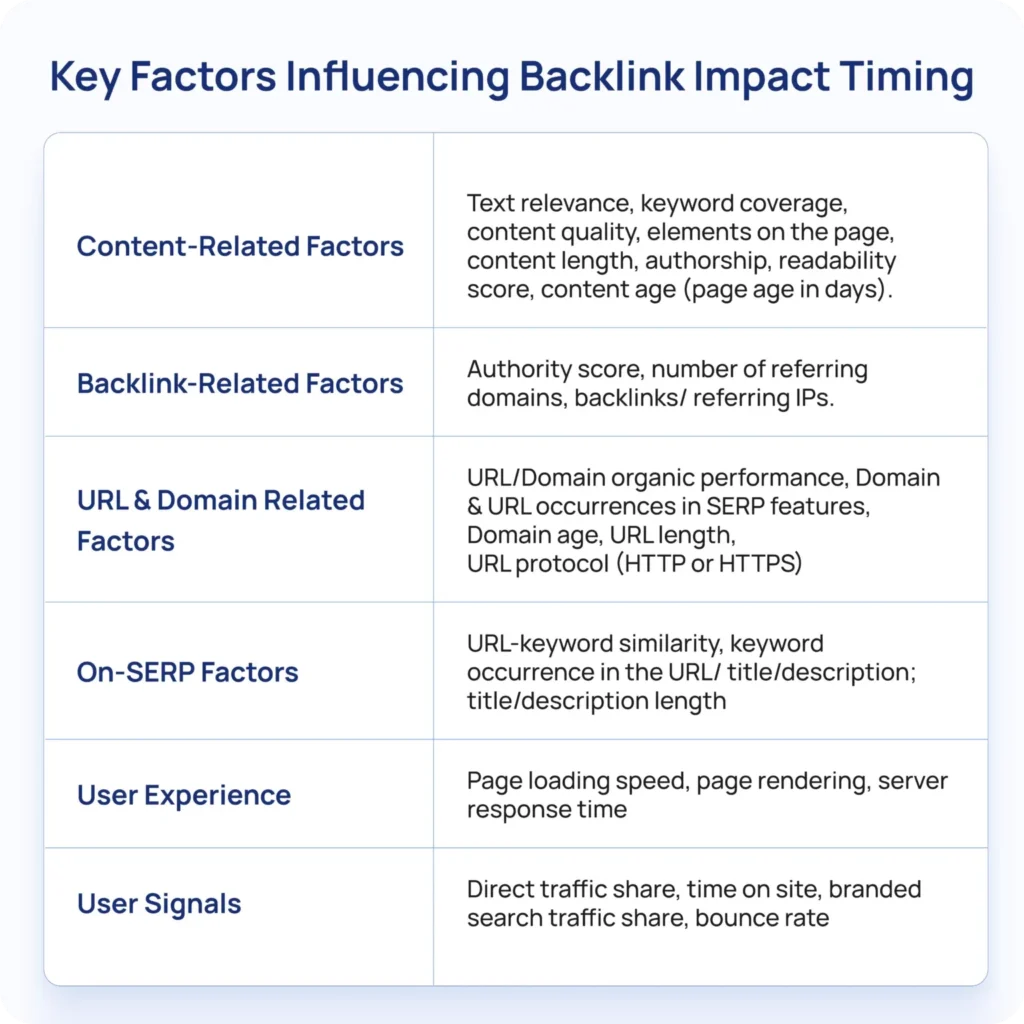
Regular monitoring and troubleshooting, especially when combined with manual link building, prevent your backlinks from remaining idle and help maximize SEO benefits.
Backlink indexing quick checklist (copyable checklist)
Grab the instant checklist to improve your backlinks and get better SEO results.

Conclusion
Backlink indexing is more than just a technical SEO process; it’s what turns your link-building efforts into real search visibility.
Without indexing, even the best backlinks remain invisible to search engines and offer no ranking value.
Links from reputable, frequently crawled websites tend to get indexed faster, while low-quality or irrelevant backlinks can be ignored for weeks or indefinitely.
Want to build high-quality backlinks that actually get indexed?
Contact us today to learn more about our professional link-building services and start boosting your website’s SEO performance.
FAQs about Backlink Indexing
What is the difference between an indexed and an unindexed backlink?
An indexed backlink is recognized by search engines and contributes to your site’s authority and rankings, whereas an unindexed backlink exists but has no SEO impact until it is crawled and recorded.
How long does it usually take for backlinks to get indexed?
The time varies depending on factors like site authority, crawl frequency, and content quality. Some backlinks are indexed within days, while others may take weeks or even months.
Do all backlinks pass authority to my site?
Not necessarily. Only indexed backlinks, especially high-quality and relevant ones, pass “link juice” to your website. Do-follow links are particularly effective in transmitting authority.
Can I speed up the indexing of my backlinks?
Yes. You can submit pages manually via Google Search Console, share backlinks on social media, use RSS feeds, or leverage the Google Indexing API for eligible pages. High-quality backlinks from trusted sources are also indexed faster.
Why is monitoring backlinks important for SEO?
Monitoring ensures your backlinks remain active and properly indexed. Tools like Ahrefs can help detect issues like broken links, redirects, or noindex tags. Combining monitoring with manual link building can maximize SEO performance.




